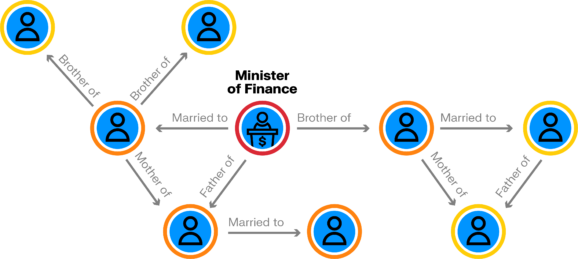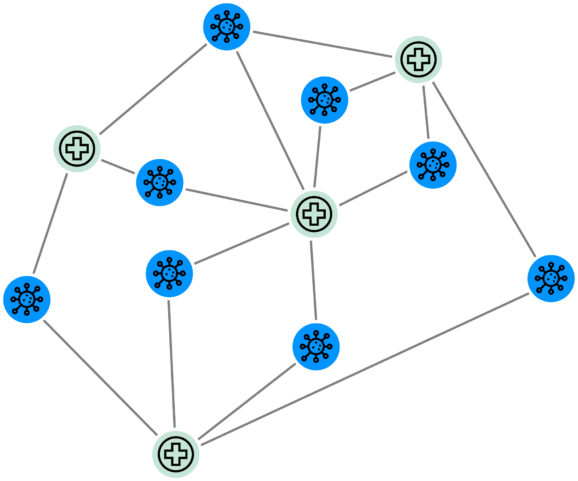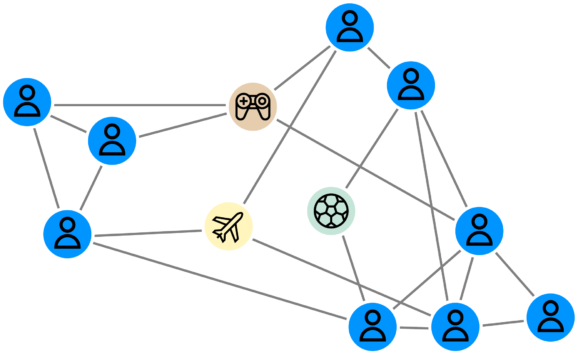Graph analytics, an emerging branch of data analytics, helps all kinds of organizations gain a deeper understanding of their data. To access data as graphs, information is stored in a graph database. A graph data model enables users not only to analyze individual data points, or nodes, but also to understand how those nodes are connected.
By treating the connections within data as first-class citizens, graph analytics quickly surfaces patterns and relationships in even the most complex datasets through graph algorithms. Graph can also be combined with other analytical techniques such as machine learning.
This technology has many applications across industries. Here are some examples of common graph analytics use cases.
Fraud detection & investigation
Fraud is an increasing threat globally and across industries, with clever fraudsters constantly finding new tactics to evade detection. Fraud investigators have large datasets at their disposal, but it can be difficult to spot illegal activity within multiple, siloed data sources. Most anti-fraud applications are able to connect simple data points together to detect suspicious behaviors: an IP address to a user, withdrawal activities to a place of residence, or a loan request history to a customer.
Graph technology brings these data sources together, making it fast and easy to see patterns that might indicate payment card fraud, VAT fraud, fraudulent insurance claims, and more.
Anti-money laundering and financial crime
Money launderers go to great lengths to cover their wrongdoing, making it especially difficult to detect suspicious activity. Complying with sanctions and beneficial ownership rules can also be time-consuming and turn up huge numbers of false positives when using traditional data analytics methods.
Graph analytics, or link analysis, can help banks and financial institutions quickly identify suspicious money transfers or relationships between seemingly normal customers and accounts, and sanctioned entities, politically exposed persons (PEPs), or known criminals.

Supply chain management
In our globalized economy, supply chains can be highly complex, full of connections and dependencies. Building a single product may require components from multiple different countries, and several production steps across locations.
Graph analytics provides companies with a clear view of data and operations. It can be used to optimize the delivery of parcels, assess the robustness of a supply chain, or understand the business impact of a failure within a supply chain.
Intelligence
Most governments maintain intelligence operations to support law enforcement, national security, or the military. Intelligence agencies collect and analyze data from various sources to find evidence of things like terrorist networks, for example.
Graph analytics allows you to quickly analyze the connections between people, emails, transactions, or phone records to facilitate intelligence insights.
Medical research
Medical and life science research is frequently about connections and dependencies. Working with very large datasets can make it difficult to identify the insights scientists need to advance their research.
Graph analytics has many applications in medical research. It can help identify and track how certain drugs are connected with adverse effects. Graph analytics can also help track the spread of disease, including new viruses like Covid-19.

IT operations management
IT operations management has become an increasingly important and complex field with our expanding reliance on computer systems, networks, and the growth of the Internet of Things. Graph analytics thrives on complexity and can be used to understand dependencies within even the most extensive IT infrastructure. It’s an efficient way to perform impact or root cause analysis, for example.
Social network analysis
Social networks are all about connections, and networks like Facebook or LinkedIn owe their rise to graph analytics. Many social network features rely on graph analytics: recommending people you may know, groups or events you might be interested in, and more.

About Linkurious and Linkurious Enterprise
Linkurious is a software company providing technical and non technical users alike with the next generation of detection and investigation solutions powered by graph technology. Simply powerful and powerfully simple, Linkurious Enterprise helps more than 3000 data-driven analysts or investigators globally in Global 2000 companies, governmental agencies, and non-profit organizations to swiftly and accurately find insights otherwise hidden in complex connected data so they can make more informed decisions, faster.